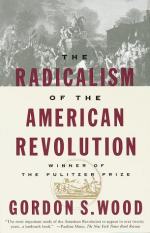
|
| Name: _________________________ | Period: ___________________ |
This test consists of 15 multiple choice questions and 5 short answer questions.
Multiple Choice Questions
1. Historically, what do good Englishmen do?
(a) Fortify their defenses.
(b) Resist tyranny.
(c) Help the downtrodden.
(d) Build their economy.
2. How could a colonial adolescent master a particular skill or learn a discipline?
(a) Be indentured or go to school.
(b) Learn from parents.
(c) Learn from a sibling.
(d) Be privately tutored.
3. At the middle of the 18th century, what did many revolutionary leaders feel the colonies still needed?
(a) A President.
(b) Monarchial control.
(c) A standing army.
(d) A constitutional government.
4. What was the status of an indentured servant in colonial America?
(a) He was a free agent.
(b) He was the lowest class of society.
(c) He was property.
(d) He was working his way up the ladder.
5. What were the religious upheavals in the colonies eventually called?
(a) Church's Decision.
(b) Puritan Petitions.
(c) Great Awakening.
(d) Religious Revolution.
6. How did non-English colonial Americans feel about the monarchy?
(a) They wished it were abolished.
(b) They had great respect for it.
(c) They had no attachment to it.
(d) They hoped it will continue.
7. What was another name for colonial gentlemen?
(a) Patricians.
(b) Egalitarians.
(c) Republicans.
(d) Aristocrats.
8. Who was an important patron of Ben Franklin?
(a) David Hume.
(b) William Keith.
(c) William Gouch.
(d) Thomas Penn.
9. Who spoke for and was responsible for servants, slaves, and tenants?
(a) The colonial government.
(b) No one was responsible for them.
(c) They were responsible for themselves.
(d) The head of the household.
10. Who must yield power for a government to be good?
(a) Men who care about society.
(b) Disinterested men.
(c) Wealthy men.
(d) Men interested in politics.
11. What was the highest level of knowledge of a trade in colonial America?
(a) Master.
(b) Expert.
(c) Apprentice.
(d) Journeyman.
12. Who rejected "ancient prejudices" that supported hereditary monarchy?
(a) Ben Franklin.
(b) Jonathan Sewell.
(c) John Locke.
(d) Thomas Paine.
13. In colonial America, which pairs of words were "opposites and irreconcilable"?
(a) Tenant and dependency.
(b) Freedom and religion.
(c) Freedom and dependency.
(d) Indentured and dependency.
14. What relationship did the American farmer have with the land he worked?
(a) He lent it.
(b) He borrowed it.
(c) He was the owner.
(d) He was a tenant.
15. In colonial America, what outweighed the concern for family lineage?
(a) Individual desires of the mother.
(b) Individual desires of the children.
(c) Individual desires of the head of the household.
(d) Individual desires of the father.
Short Answer Questions
1. When first offered, why did Ben Franklin say he would not accept the military rank of colonel?
2. What was the highest class of British society called?
3. What was another name for colonial commoners?
4. What was Philadelphia's approximate population in 1760?
5. How did Colonel Landon Carter express his confusion about child rearing in colonial society?
|
This section contains 451 words (approx. 2 pages at 300 words per page) |

|




